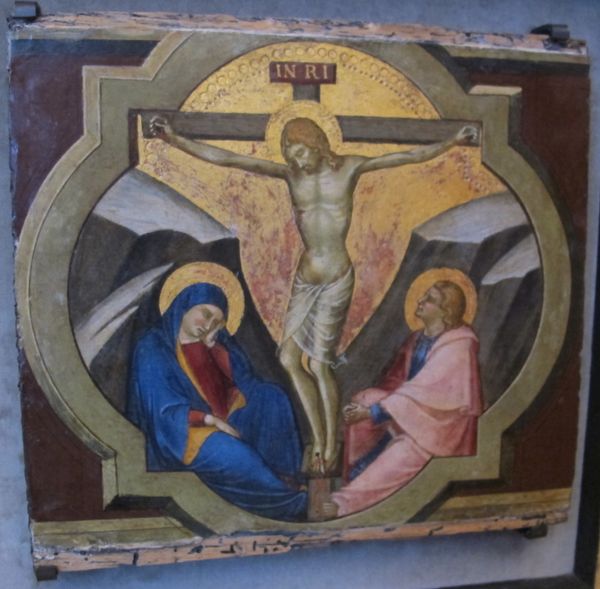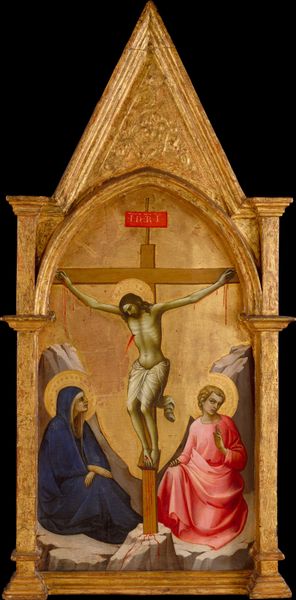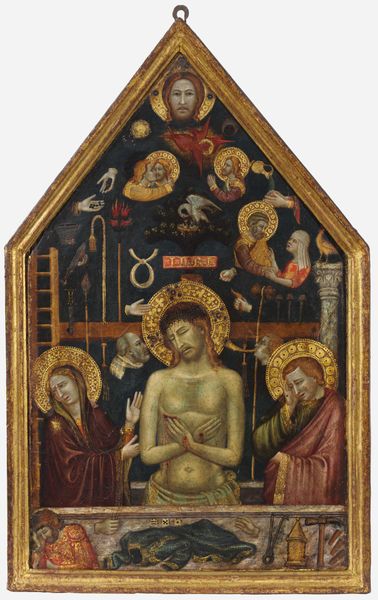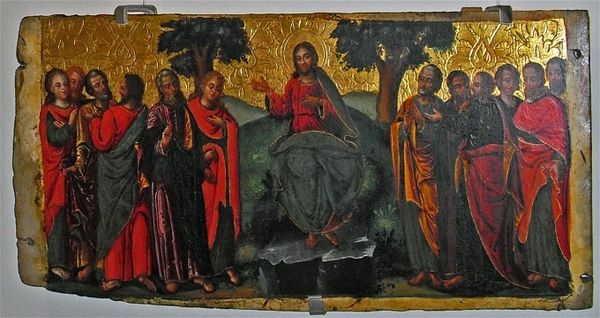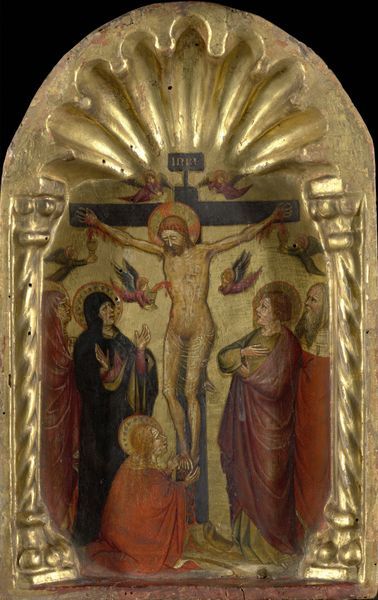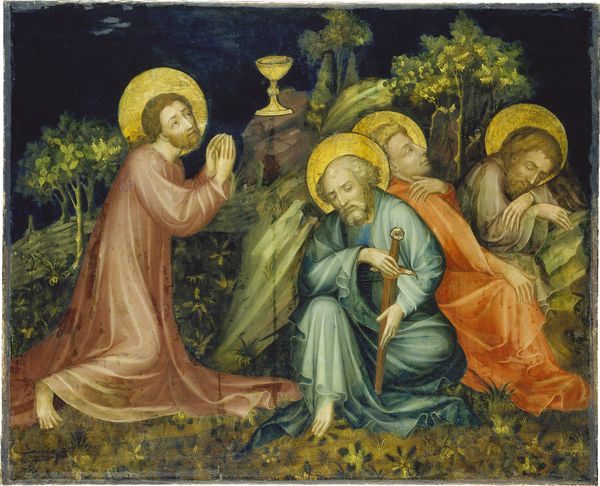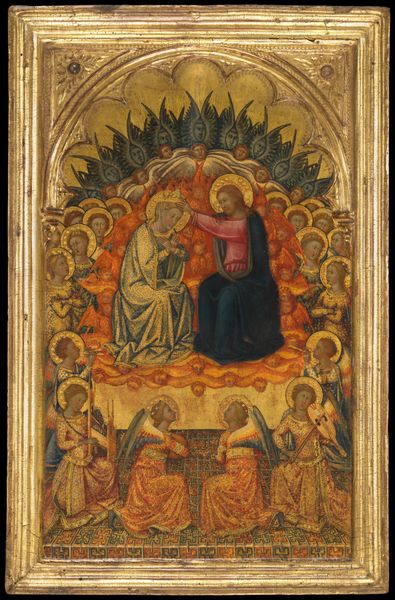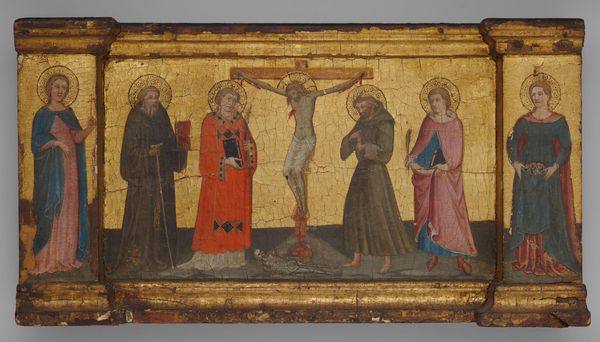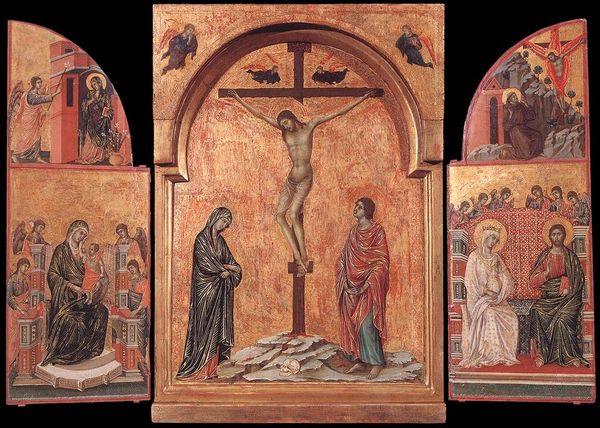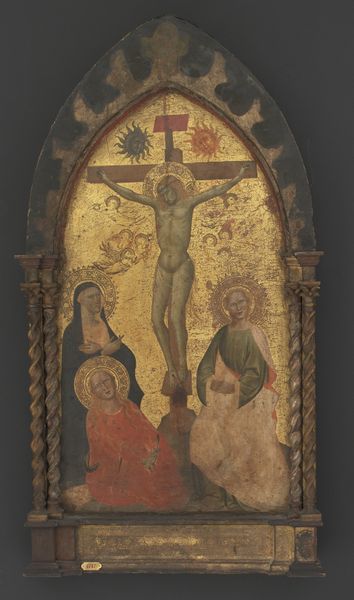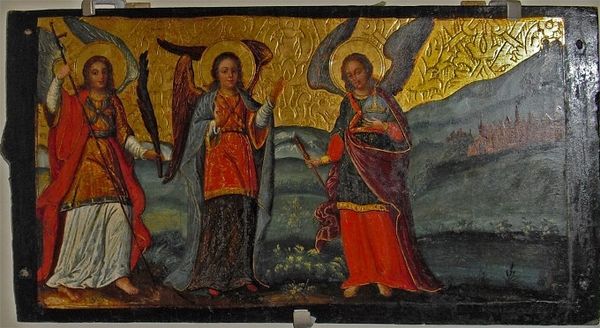
painting, oil-paint, wood
#
byzantine-art
#
narrative-art
#
painting
#
oil-paint
#
figuration
#
oil painting
#
wood
Copyright: Public domain
Curator: Here we have Ivan Rutkovych's "The Old Testament Trinity," an oil painting on wood dating back to 1699. What are your immediate impressions? Editor: It feels...both solemn and surprisingly domestic. Those three winged figures are clearly celestial, but gathered around a table laid with food, almost like a casual brunch. The faces are beautifully painted! It reminds me of the iconic "Trinity" by Andrei Rublev, but here, the artist offers a distinct local vision. Curator: Absolutely. This piece reflects the Ukrainian Baroque style that Rutkovych mastered. Notice the gold leaf background, the intricately patterned robes, the stylized faces. There's an otherworldliness, yes, but also a sense of human connection, which comes across due to the clear emotional charge invested by the painter. We can delve deeper here and ask to what extent the traditional patriarchal construction of divinity, embodied here by God represented by the Holy Trinity is open for critique. Editor: That's it, that tension is key. It depicts the story of Abraham and Sarah's hospitality to three angels, a prefiguration of the Trinity. The presence of Abraham and Sarah on the right, peering from behind a doorway, creates a powerful sense of voyeurism, and emphasizes the importance of their offering to strangers, embodying an ethos of radical hospitality. The work definitely feels like more than just a religious painting; I think there is an undeniable and politically charged message here about offering your home to strangers and what it means to recognize a refugee. Curator: I see what you mean. It could be said the painting subtly invites reflection on Ukrainian identity and experience through a combination of religious theme, material execution and aesthetic sensibility. The materiality alone—oil paint on wood—speaks to a tangible, grounded spirituality, unlike more ethereal representations. Editor: Precisely. The use of everyday, available resources. It is beautiful and meaningful for a more accessible public. Curator: Well, considering its lasting beauty, "The Old Testament Trinity" speaks eloquently across the ages. Editor: Indeed, the painting, which makes references to traditions while incorporating innovative perspectives for its time, continues to generate complex meanings, in part by reflecting different traditions and by adapting religious images.
Comments
No comments
Be the first to comment and join the conversation on the ultimate creative platform.

